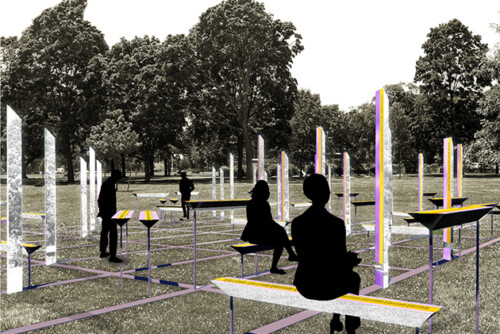One of her biographers, Phyllis Rose, notes that her appeal for the French was that they discovered in Baker an “Americanized Africa.” 1
Princess Tam Tam is replete with mirror effects. Max de Mirecourt’s name (“look at the court”) satirically inscribes specularity at the center of the film, while spirals and endless motions, graphically represented by the hypnotic coils that turn without end in some of the stage scenes, entrance the viewer. 2 The choreography of the “chorus girls” during the maharajah’s ball offers continuously self-reproducing motions, falls, and circles, and blends in with the idea of fiction as dream that the novel as fiction installs as the core narrative device. Smoke and incense also function as blending effects to offer dreamlike imagery. 3 The same is true of the waves and sails of the sea in the scene in which Alwina sings in Tahar’s boat. The screen and its images exploit ad nauseam the quality of make-believe inherent in the show: they give something to see beyond the reality of life as they mimic the motions of desire.
The filmic image, Julia Kristeva explains, though granted in relation to Alfred Hitchcock and Sergei Eisenstein, is linked to the drive:
At the intersection between the real object and phantasm, the filmic image turns into an identifiable (and nothing is more surely identifiable than the visible) that remains beyond identification: the drive as non-symbolized, not caught in the object—neither in sign nor in language—or, to put it more bluntly, it unleashes aggressiveness. 4
The film of a theatrical or dance performance doubles its effect, since Baker always exceeds the character she plays in the filmic narrative. In addition, the notion of “fascinating specularity”—that which is both charming and evil—helps to better explain the reaction to Baker as both animal and woman, both devilish and seductive. The motion brings to the fore the physicality of her dance performance and annihilates the frames to push forward the dancing body. After the initial warm-up dance performance among the children, this effect is fully achieved in the bar scene [video] in which Alwina frees herself from the constraints of civilization and dances among sailors and a range of low-life characters that represent the people. Modernism meant revivification at the contact of nature, the people, the African. In the case of the bar scene, the range and location of her motion combine to produce a doubling of that effect.

- Phyllis Rose, Jazz Cleopatra: Josephine Baker in Her Time (New York: Doubleday, 1989), p. 18.[↑]
- Alexander Calder’s iron-wire sculpture of Josephine Baker (1927-29) also features a coil at its center and for the breasts.[↑]
- These two stage props often act as transitions between sets.[↑]
- Julia Kristeva, La Révolte intime (discours direct): Pouvoirs et limites de la psychanalyse. (Paris: Fayard, 1997), pp. 136-137 (translation mine).[↑]



